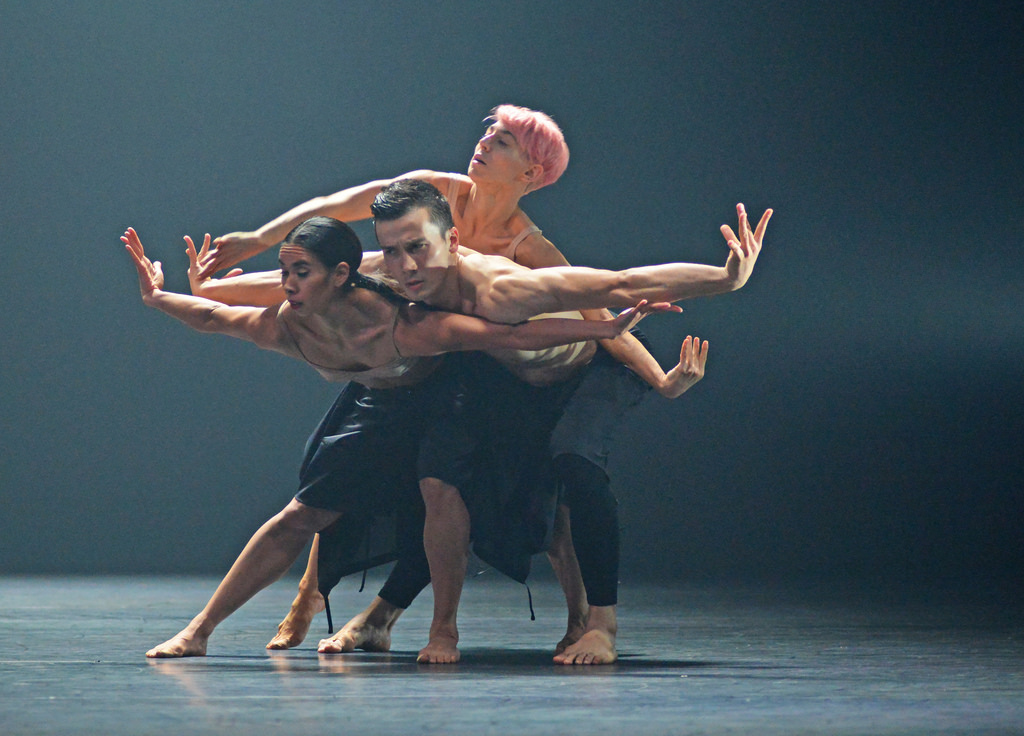James McVinnie
On May 4, Liquid Music presents renowned organist James McVinnie with London-based electronics duo Darkstar in the world premiere of Collapse at Northrop (Minnesota debuts for all artists). McVinnie’s boundless approach to music has led him to collaborations with a fascinating variety of distinctive artists across musical genres. From 2008 to 2011 he held the post of Assistant Organist of Westminster Abbey. Read McVinnie’s generous program note for Collapse, which overviews more than his collaboration with Darkstar, but gives insight into his life as an organist and his relationship with electronic music.
I come from a thoroughly traditional background as a classically trained organist — I’ve held positions in church music and played the majority of the core organ repertoire. Music with less traditional roots has however always been a big part of my musical makeup and a fire to my imagination. It was through my record label, Bedroom Community, that my knowledge of electronic music really started to blossom. I came to know, as friends, a network of artists who were creating groundbreaking work — particularly Valgeir Sigurðsson and Ben Frost at Greenhouse Studios in Reykjavik — and a whole new world slowly revealed itself to my ears and mind. I’ve become fascinated with synthesis in music and how that relates to the pipe organ; the two seemingly opposite sides to a coin are in fact much closer to one another than one might imagine.
Northrop’s Aeolian-Skinner Pipe Organ
Each organ is different; each has its own unique disposition of ‘stops’, ‘registers’ (or ‘instruments’ in all but name) which are voiced to sound their best for the acoustic space they inhabit. The room that houses the organ therefore becomes part of the instrument itself and organists therefore become orchestrators — each piece has to be fitted to each new instrument, often taking into consideration the wishes of the composer and/or conventions about which ‘registers’ or ‘stops’ to use according to national styles or fashions of the day. Organists thus develop a highly attuned ear for adapting music to a particular instrument and acoustic space, a process which is identical to that of a producer, creating and mixing music originating from the studio using synthesised instruments.
The sound of the organ is created by air resonating through pipes. This sound is without modulation or change; the note stays sounding the same until your finger or foot releases the key (often unfairly earning the instrument an unmusical, inflexible reputation!). This super-flatness encourages the player to use various different registers (or ‘stops’ as described above) of the organ in imaginative ways to create variety of sound, just as a composer would chose their instruments in an orchestral work, or like how you would program a synthesiser. These registral colourations, coupled with careful and intricate deployment of compositional textures and figurations, provide limitless possibilities for musical exploration.
McVinnie at Eaux Claires’ Baroque Installment
One of the most appealing aspects of the organ is that its vast symphonic capabilities are accessible to a single person. The organist can change registration (through simple sequencing technology) in an instant. Tom Jenkinson (better known as the electronic musician Squarepusher who has written me a large body of music for organ) writes:
Tom Jenkinson (Squarepusher)
There are aspects of writing for organ which I find comparable to writing music for electronics. There is a very tangible weight to the amount of technology around you in an organ performance, unlike any other acoustic instrument I have any experience of. Sounds may be accessed by the touch of button, such that sonic variety is achieved by mechanical means as much as it is by the performer's skill. In that way I see the organist as immersed in technology much more than performers of other acoustic instruments and, despite its long history, it thus seems an eternally modern instrument. Maybe there is something reminiscent of the dark glamour of a computer genius about the organist, wrapped up in machinery, remote from and indifferent to praise.
Darkstar
The pipe organ is famed in popular culture for its gothic ‘dracula’ appeal, a notoriety which belies its subtlety, great nuance and strangeness. In working with James and Aiden on this project, I have tried very hard to make the organ not sound like an organ — I’ve tried to pair the notes written with unusual, characterful registral combinations to try to blur the edges between electronics and pipes. This performance represents our largest scale collaboration to date.
Liquid Music presents the world premiere of Collapse by James McVinnie and Darkstar Saturday, May 4 at Northrop. BUY TICKETS HERE.
FOLLOW JAMES MCVINNIE:
Website: https://www.jmcvinnie.com/
Instagram: @jmcvinnie
Facebook: https://www.facebook.com/jamesmcvinniemusic/
FOLLOW LIQUID MUSIC FOR UPDATES AND ANNOUNCEMENTS:
Twitter: @LiquidMusicSPCO
Instagram: @LiquidMusicSeries
Facebook: facebook.com/SPCOLiquidMusic


















